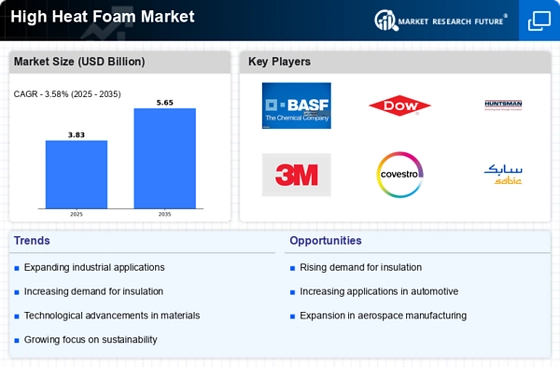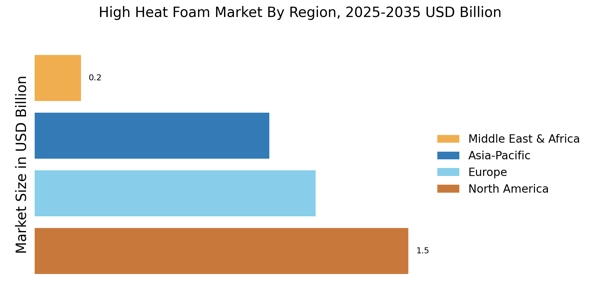Rising Demand in Automotive Sector
The automotive sector is experiencing a notable increase in the demand for high heat foam materials. This trend is primarily driven by the need for lightweight, durable, and heat-resistant components in vehicles. High heat foam is utilized in various applications, including insulation, soundproofing, and cushioning, which are essential for enhancing vehicle performance and passenger comfort. The high heat foam market is projected to witness a growth rate of approximately 5% annually, as manufacturers seek to improve fuel efficiency and reduce emissions. Furthermore, the shift towards electric vehicles is likely to further bolster the demand for high heat foam, as these vehicles require advanced materials to manage thermal management systems effectively.
Expansion in Aerospace Applications
The aerospace industry is increasingly adopting high heat foam materials due to their superior thermal insulation properties and lightweight characteristics. High heat foam is utilized in aircraft interiors, engine compartments, and thermal protection systems, where temperature regulation is critical. The high heat foam market is expected to benefit from the rising number of air travel passengers and the subsequent demand for new aircraft. According to industry forecasts, the aerospace sector is anticipated to grow at a compound annual growth rate of around 4% over the next decade. This growth is likely to drive innovation in high heat foam formulations, enhancing their performance and expanding their applications within the aerospace domain.
Increased Focus on Energy Efficiency
The growing emphasis on energy efficiency across various industries is driving the demand for high heat foam materials. High heat foam is recognized for its excellent insulation properties, which contribute to reducing energy consumption in buildings, appliances, and industrial processes. The high heat foam market is likely to see increased adoption as companies strive to meet energy efficiency regulations and sustainability goals. For instance, the building sector is projected to account for a substantial share of the high heat foam market, as insulation materials are critical for achieving energy-efficient designs. This trend is expected to propel the market forward, with a projected growth rate of around 6% in the coming years.
Surge in Consumer Electronics Production
The consumer electronics sector is witnessing a surge in production, which is positively impacting the high heat foam market. High heat foam is increasingly used in electronic devices for thermal management, cushioning, and protection against heat damage. As the demand for advanced electronic products, such as smartphones, laptops, and gaming consoles, continues to rise, manufacturers are seeking high heat foam solutions to enhance product performance and longevity. The high heat foam market is projected to grow in tandem with the electronics market, which is expected to expand at a compound annual growth rate of approximately 7% over the next few years. This growth presents significant opportunities for high heat foam manufacturers to innovate and cater to the evolving needs of the electronics industry.
Technological Innovations in Material Science
Technological advancements in material science are playing a pivotal role in shaping the high heat foam market. Innovations such as the development of new polymer blends and composite materials are enhancing the thermal resistance and mechanical properties of high heat foams. These advancements enable manufacturers to produce foams that can withstand extreme temperatures while maintaining structural integrity. The market is witnessing a surge in research and development activities aimed at creating high-performance foams tailored for specific applications, such as industrial insulation and fireproofing. As a result, the high heat foam market is likely to experience a significant transformation, with new products entering the market that meet stringent regulatory standards and customer demands.


















Leave a Comment